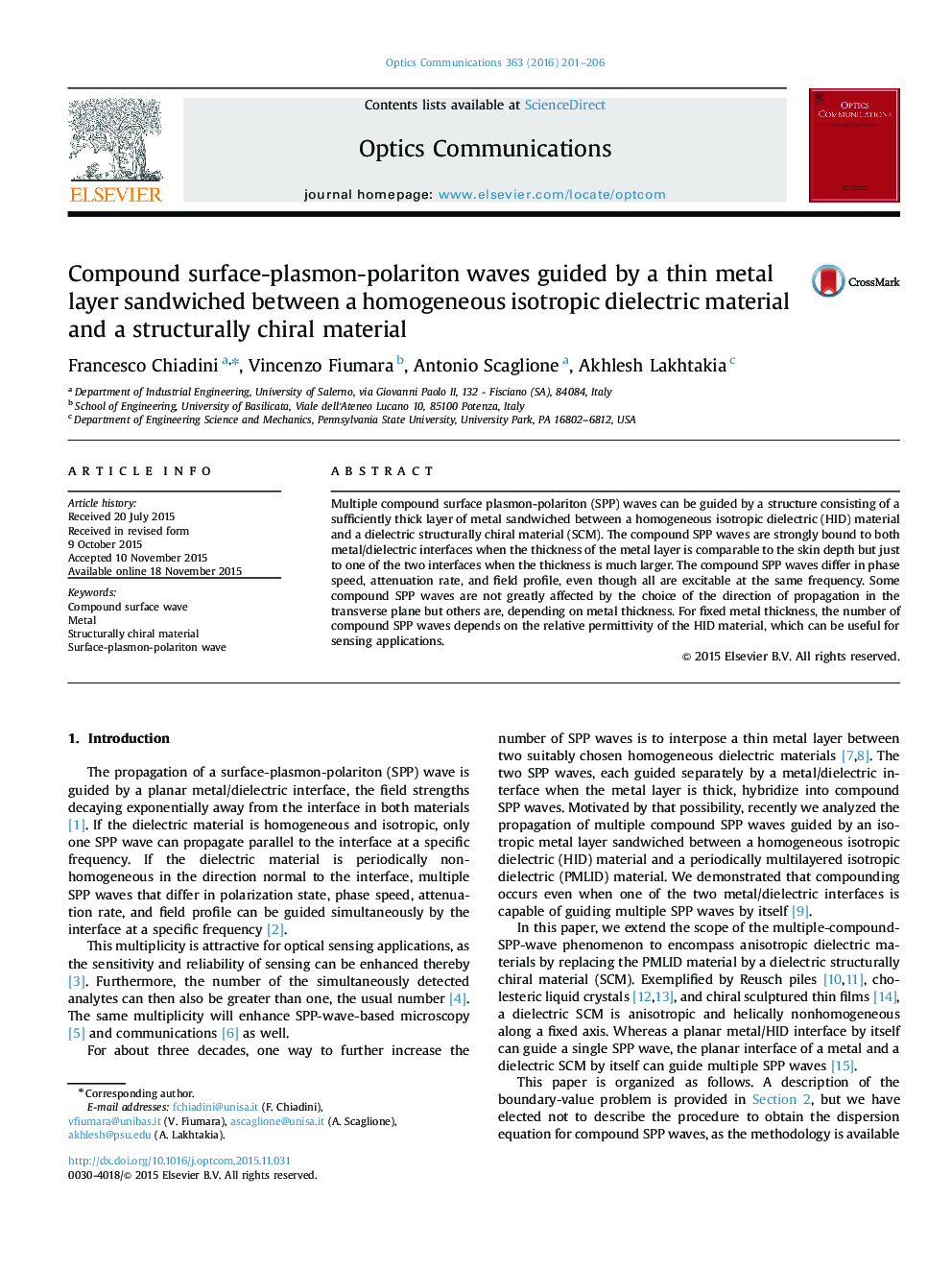| Article ID | Journal | Published Year | Pages | File Type |
|---|---|---|---|---|
| 1533701 | Optics Communications | 2016 | 6 Pages |
•The compound SPP waves are strongly bound to both metal/dielectric interfaces when the thickness of the metal layer is comparable to the skin depth.•The compound SPP waves are strongly bound to one of the two interfaces when the thickness is much larger than the skin depth.•Some compound SPP waves are not greatly affected by the choice of the direction of propagation in the transverse plane but others are, depending on metal thickness.•For fixed metal thickness, the number of compound SPP waves depends on the permittivity of the HID material(useful for sensing applications).
Multiple compound surface plasmon-polariton (SPP) waves can be guided by a structure consisting of a sufficiently thick layer of metal sandwiched between a homogeneous isotropic dielectric (HID) material and a dielectric structurally chiral material (SCM). The compound SPP waves are strongly bound to both metal/dielectric interfaces when the thickness of the metal layer is comparable to the skin depth but just to one of the two interfaces when the thickness is much larger. The compound SPP waves differ in phase speed, attenuation rate, and field profile, even though all are excitable at the same frequency. Some compound SPP waves are not greatly affected by the choice of the direction of propagation in the transverse plane but others are, depending on metal thickness. For fixed metal thickness, the number of compound SPP waves depends on the relative permittivity of the HID material, which can be useful for sensing applications.
